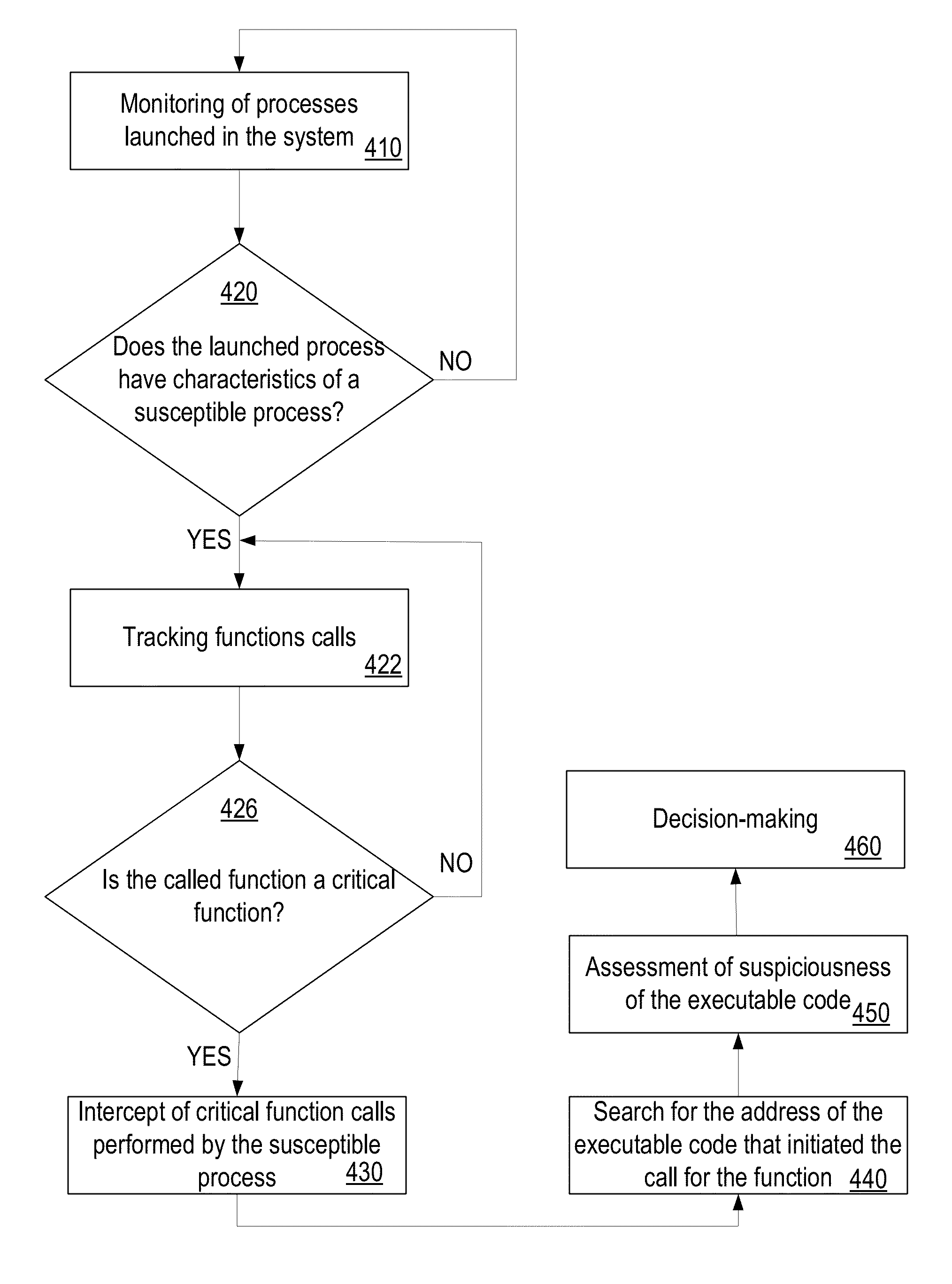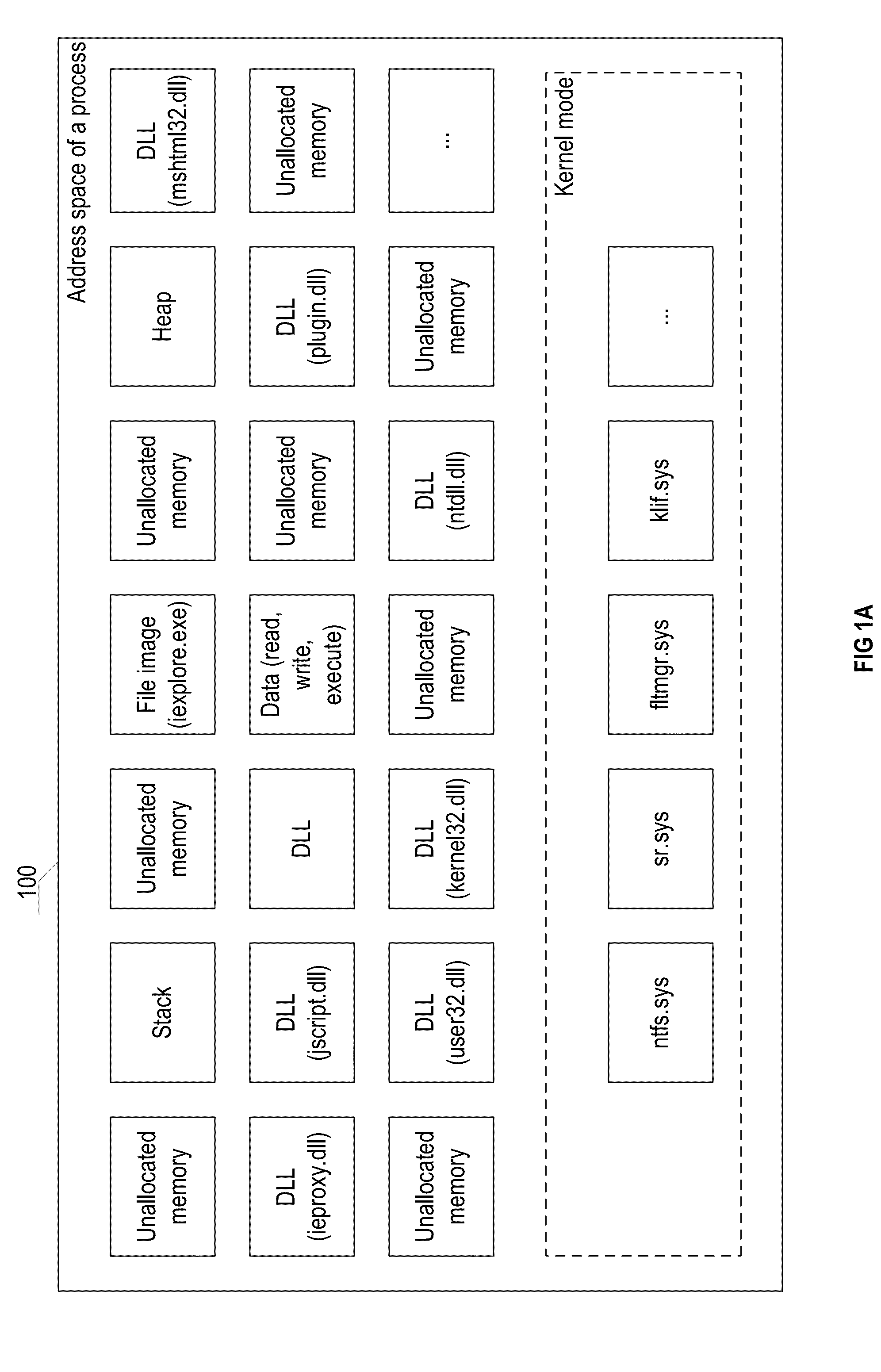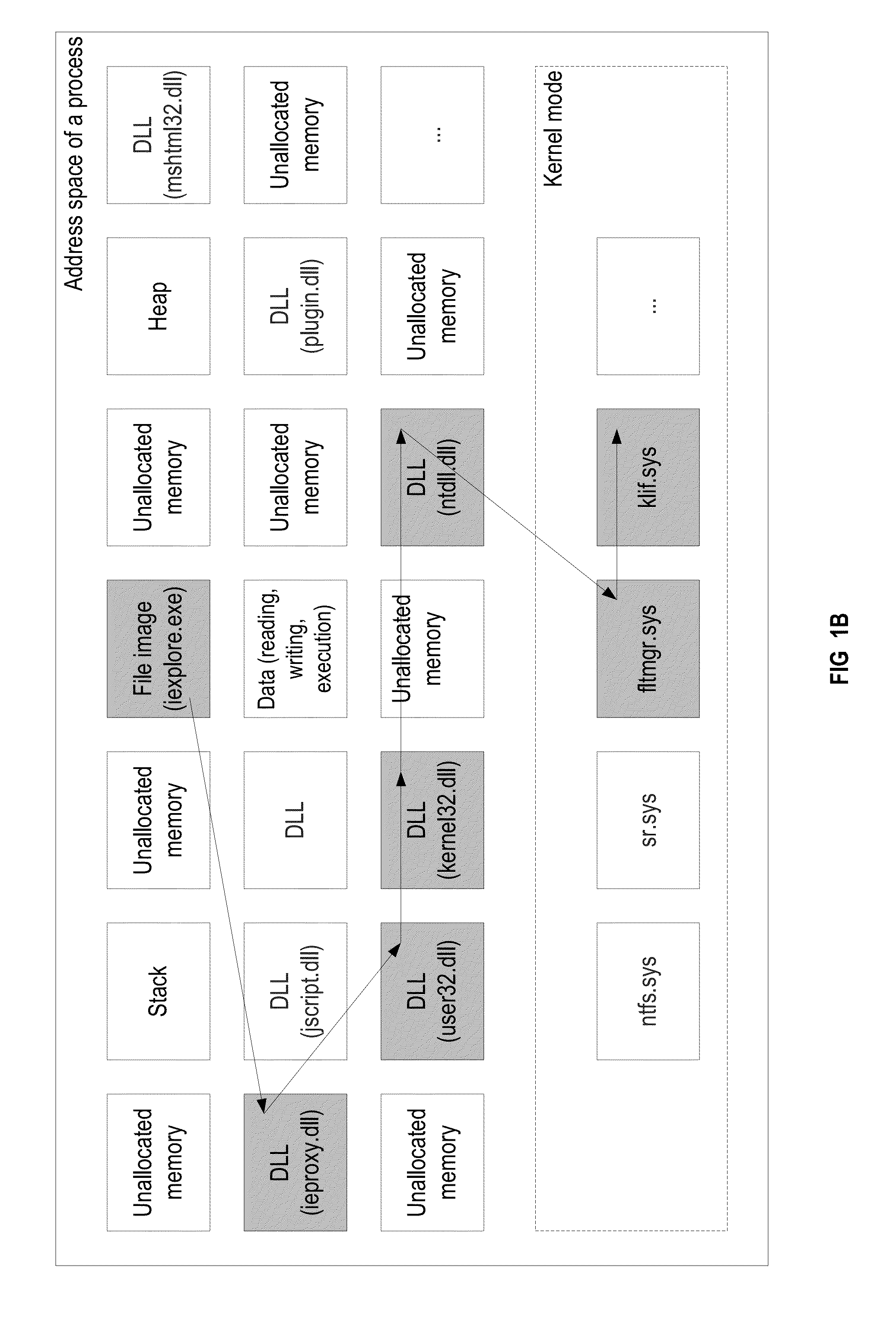Selective assessment of maliciousness of software code executed in the address space of a trusted process
a trusted process and software code technology, applied in the field of information processing and communications technologies, can solve the problems of non-typical presence of executable code in this area, suspicious call for function, and inability to detect malicious programs, and achieve the effect of assessing the maliciousness of program instructions
- Summary
- Abstract
- Description
- Claims
- Application Information
AI Technical Summary
Benefits of technology
Problems solved by technology
Method used
Image
Examples
Embodiment Construction
[0030]A process may be considered as a container of resources which are required to execute program's code. A process has a virtual address space, a sample structural diagram of which is illustrated in FIG. 1. Into the virtual address space of a process 100, an executable file is projected, from which the process is loaded (in the example being discussed, it is the file iexplore.exe of the Internet Explorer web browser), as well as the dynamic-link libraries (DLLs) related to it. Also, the address space of the process stores data structures, such as a stack and a heap, which will be discussed below in more detail. Each process contains at least one thread. A thread uses system resources (for example, files, system registry keys, synchronization objects) and the address space of the process. The execution of a program code occurs via the process threads.
[0031]The examples illustrated in FIGS. 1B and 1C illustrate the difference between a sequence of the calls made on behalf of a proc...
PUM
 Login to View More
Login to View More Abstract
Description
Claims
Application Information
 Login to View More
Login to View More - R&D
- Intellectual Property
- Life Sciences
- Materials
- Tech Scout
- Unparalleled Data Quality
- Higher Quality Content
- 60% Fewer Hallucinations
Browse by: Latest US Patents, China's latest patents, Technical Efficacy Thesaurus, Application Domain, Technology Topic, Popular Technical Reports.
© 2025 PatSnap. All rights reserved.Legal|Privacy policy|Modern Slavery Act Transparency Statement|Sitemap|About US| Contact US: help@patsnap.com



